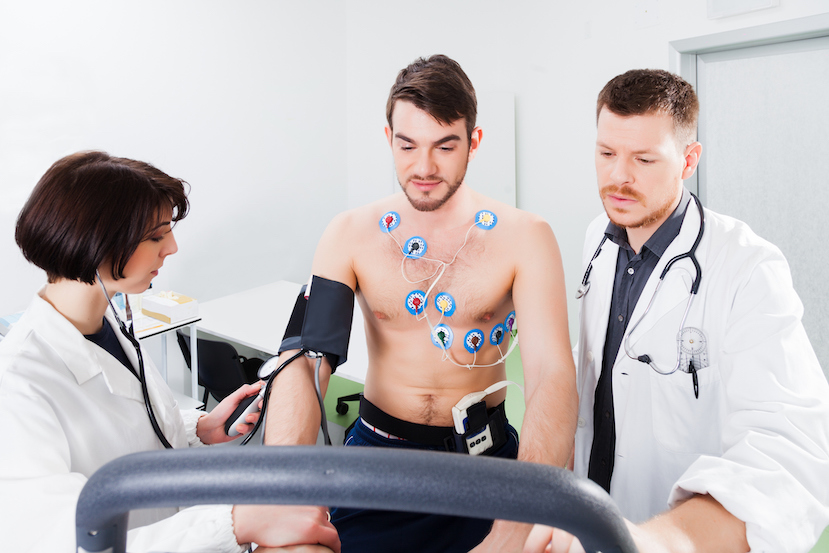Using a GE MAC1200 students will practice placing leads on each other and connect those leads to EKG machines and run actual Electrocardiograms. After doing so they will evaluate the EKG readout and determine if the lead placements were correct and if in fact the EKG readout is interpretable by a healthcare worker.
The lead placement is VERY key to the success of an Electrocardiogram. If one lead is not reading the electrical conductivity of the heart, then an invalid report will be generated. All 10 leads must be properly placed and receiving electrical signal from the heart. Determining if a lead is properly placed or placed incorrectly can be done during the placement of the leads by maneuvering leads into locations on the body where they are intended to be. As every person is different, the locations of the leads are appox, excess adipose (fatty) tissue and other factors can affect the reports accuracy.

Although the lead placement is very similar on most individuals, most of us do not look like the sample individual at left. Every person has a different shape and size and therefore lead placement is of paramount importance when it comes to attaining accurate and discernable lead information via electrical conductivity from the heart. We will also cover 3 lead EKG placement used in emergencies and telemetry.
If all your leads are connected in the proper locations to the patient, an accurate report will print out, thus allowing a qualified healthcare worker to interpret the report, diagnose the problem and institute a proper treatment regimen to help the patient return to a healthy fully functional health status.